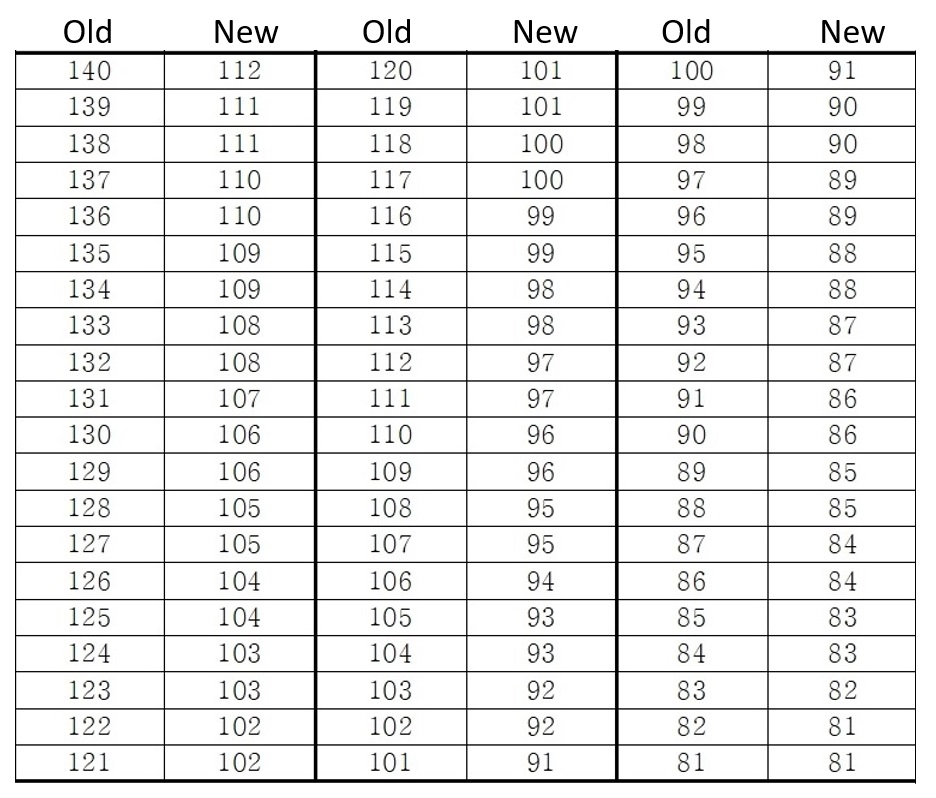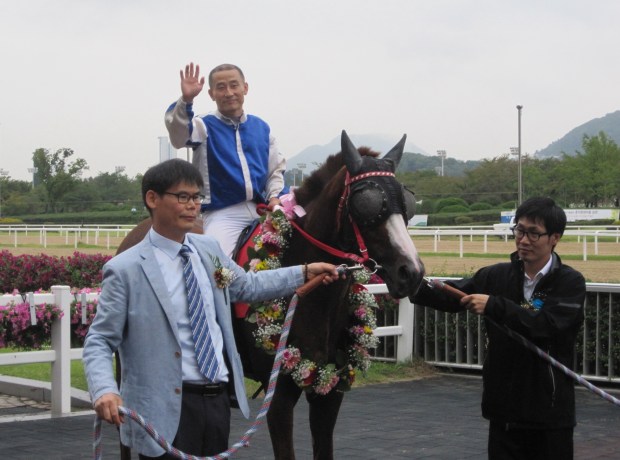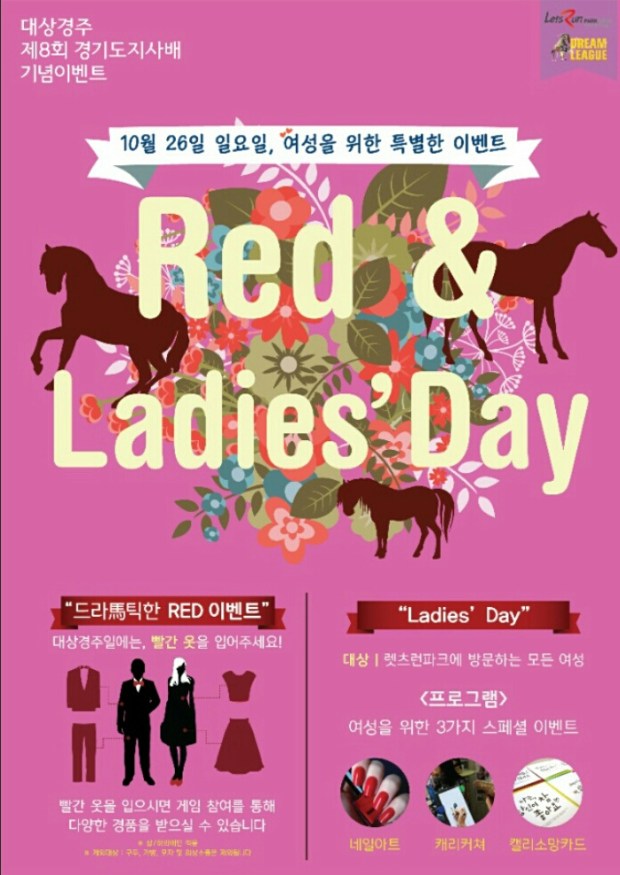Last weekend saw the end of any class 1 and class 2 races restricted to Korean bred horses. From now on, it is all against all at the highest level. And the nation’s best locally-bred horse, Gyeongbudaero, is immediately sent out to take on the challenge of the imports at Busan on Sunday.
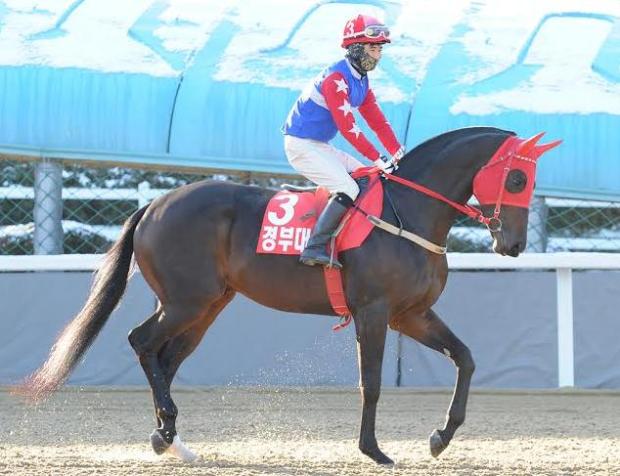
Leading the line: Gyeongbudaero (Pic: Ross Holburt)
The Korea Racing Authority’s decision to no longer set aside some class 1 & 2 races for domestic horses only has been controversial but is intended to eventually improve the quality of the locally bred horses. Every horse is now assigned a rating which will determine which class they can race in so to win the big money, they will need to beat imported horses.
At Busan, they’ve already been doing just that for quite some time. The likes of Mister Park, Dangdae Bulpae, Yeonseung Daero and latterly Indie Band and Gyeongbudaero have been the track’s main stars over the past few years. All were Korean bred and all took on and beat the imports. Among the current top ten rated horses at the track, five are Korean bred and five imported.
At Seoul, it is a little different. Asked to name the best horses from recent years, names likely to come up are Tough Win, Dongbanui Gangja, Smarty Moonhak and going back a couple of years further, Bally Brae and Subsidy. All were American bred. J.S. Hold and Myeongmun Gamun may get mentioned but they never managed to beat the imports and neither did Jigeum I Sungan, who only ran in an open race one time. In fact, the mare Top Point is the only one who readily springs to mind. Only two of the current top-ten rated horses at Seoul are locally bred.
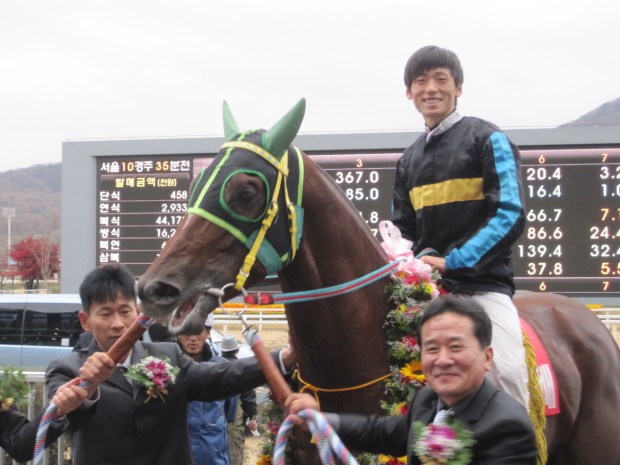
Beating all-comers: Dangdae Bulpae
This is simplistic but perhaps helps illustrate one reason why there is more resistance to integrated racing in the capital. While there are class 1 and class 2 races scheduled for Busan this weekend, the KRA has already abandoned the ones it had planned for Seoul after the Owners’ Association made clear its members would not be making any entries. Indeed there is still a threat that this unofficial boycott may extend to all races in the capital. We will know at 4pm on Thursday.
This is unlikely but even if everything goes ahead as planned, one casualty has already been Friday and Saturday’s overseas simulcast. In the event of a large-scale cancellation of races at Seoul, the Busan race schedule could be amended. With that uncertainty, the KRA decided to cancel the simulcast as a precaution and at an early stage in order to allow overseas partners maximum time to secure races from elsewhere.
Whatever the rights and wrongs of its implementation, the change is one that needs to happen. Racing here must become more competitive and sterner tests for locally bred horses are essential in achieving this. For all the many things it can be questioned about, the KRA’s commitment to the breeding industry here isn’t one of them as is shown by its continued investment in better and better stallions. The Triple crown races will continue to be restricted to Korean bred horses.
That brings us back to Busan’s Sunday feature. Gyeongbudaero will be making his first appearance since winning the Grand Prix Stakes at Seoul in December and will be top weight in the 2000M handicap. Fittingly, there will be six Korean bred horses and six imported horses in the starting gate. Also among the Koreans is Gumpo Sky, who has won two consecutive class 1 races and faces imports for the first time. Among those imports is Cheonji Bulpae, the 6th highest rated horse at Busan as well as Spring Gnarly who is unbeaten in seven starts since returning from a year’s layoff last May.
It makes for a fascinating contest for both the punter and the sportsman. If this is the kind of race we can look forward to on a regular basis, the change is surely one for the better.
